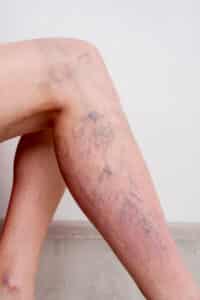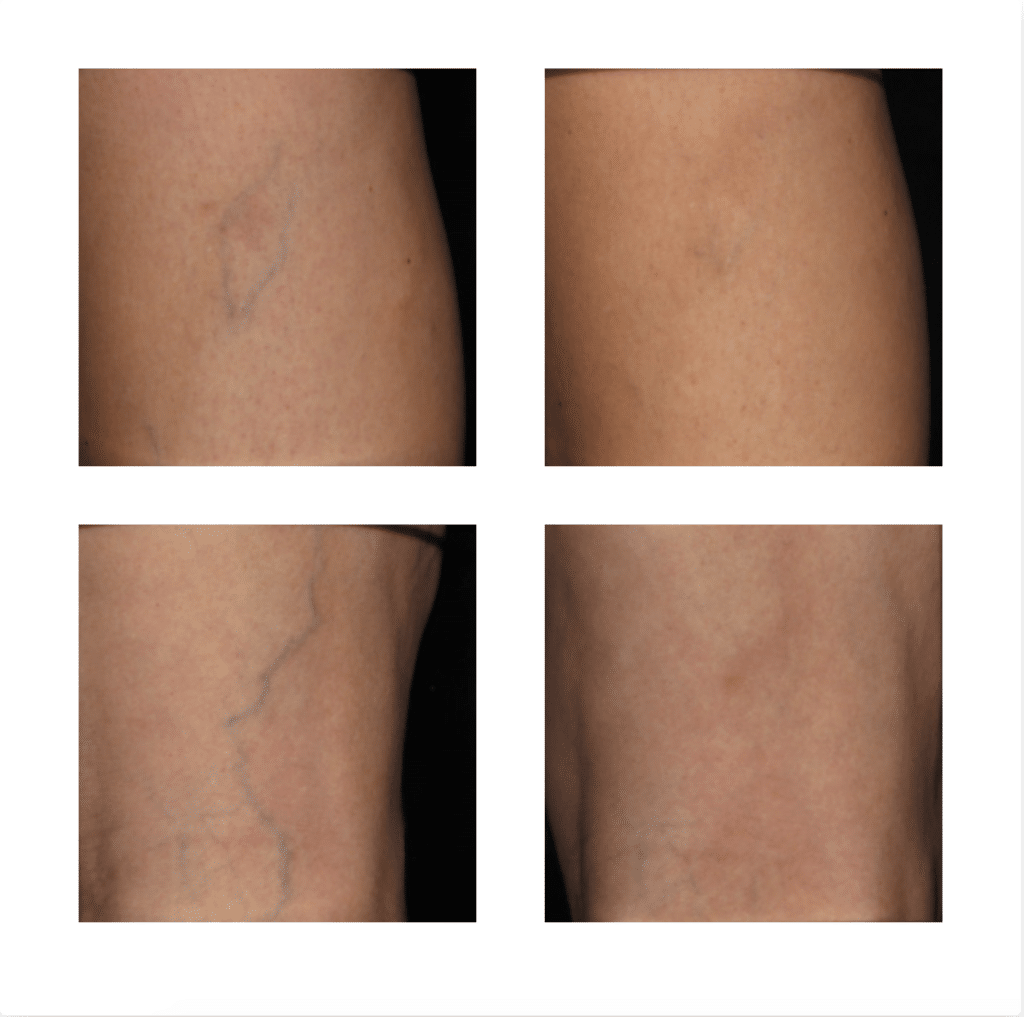Asclera®
Asclera for Spider Veins
One sure sign that you’re getting older is the appearance of tiny clusters of squiggly red, purple, and blue lines on your thighs, calves, and ankles. Spider veins. Taking their name from their web-like appearance, spider veins aren’t usually painful, but no one likes to see them show up on their legs.
Dr. Quintana use sclerotherapy to treat spider veins and smaller varicose veins. For these treatments, we use a newly FDA-approved sclerosant, Asclera®.
What are spider veins?
Spider veins are small superficial clusters of veins that are close to the skin surface. Because they are carrying dark, de-oxygenated blood, they are visible on the skin surface. They are common in women as they age. There is a genetic component to developing spider veins, as well.
What causes spider veins?

Plus, the veins can be at fault. The veins have one-way valves in them that prevent blood from backflowing. These valves can begin to malfunction. Plus, the veins themselves can weaken. The combination allows blood to pool in spots or for the blood flow to slow and become inefficient. This is why varicose veins and spider veins form. Their curvy ways are signs that the blood is pooling and otherwise not flowing very well.
How does sclerotherapy remove spider veins?
The best way to remove spider veins is called sclerotherapy. Originally developing in the 1920s, sclerotherapy is a simple procedure. A sclerosing solution (formerly mostly saline) is injected with a very thin needle directly into the spider vein or adjacent to it. The sclerosing agent irritates the vein walls, causing them to collapse. This closes off the vein and immediately lessens its appearance. Then over the next few weeks, the body goes about the process of absorbing the now-unused vein, making it fully go away. Any blood that was routed through the spider vein is instantly re-routed to an adjacent, healthier vein.
At the Laser & Mohs Dermatology, we now use a relatively new sclerosing agent called Asclera® for our spider vein treatment. This has proven to be very comfortable for our patients.
What is Asclera?
Asclera® is an FDA-approved prescription medicine that is used for sclerotherapy. It is used to treat two types of veins in the legs:
- Uncomplicated spider veins (less than 1 mm in diameter)
- Uncomplicated small varicose veins (from 1 mm to 3 mm in diameter)
Asclera® is clinically known as polidocanol. Dr. Quintana trusts Asclera® rather than other sclerosant agents for its consistency. Proven consistency and effectiveness was necessary to gain FDA approval.
How does Asclera work?
Asclera® is a sclerosing agent that is injected into the unwanted vein. Once injected, Asclera® irritates the endothelium, the inside lining of the vein. This causes blood platelets and cellular debris to attach to the walls, and this causes the vein to collapse and close off. This instantly dramatically decreases the visibility of the spider vein. Over the course of a few weeks the body then scavenges the unused vein and it completely disappears.
Before & After Asclera® treatment
Treated with 1% Asclera®
How long does a sclerotherapy session with Asclera take?
A typical session with Dr. Quintana lasts from 15 to 45 minutes, depending on the number of spider vein clusters being targeted. Generally, 1-3 injections may be used for a single spider vein. This is usually sufficient to close off the unwanted vein, but sometimes a second injection session in 1-2 weeks may be needed.
When will I see results from sclerotherapy?
Results are immediate, as the injection of Asclera® causes the vein walls to collapse. This instantly reduces the visibility of the vein. For some veins, this completely makes the vein invisible on the surface skin. For others, they decrease in visibility but aren’t fully gone for a few weeks.
What happens after my sclerotherapy session?
Dr. Quintana recommends that you wear compression hose during waking hours for one to two weeks. This is especially true if you had a number of veins treated. The pressure applied by these hose improves the body’s ability to immediately start absorbing these closed-off veins. Otherwise, walking and moderate exercise is fine immediately after your procedure. You should avoid any really strenuous exercise for about one week, however.
Potential risks involved with sclerotherapy with Asclera
As mentioned above, sclerotherapy has been performed since the 1920s and it remains the best method for removing spider veins and small varicose veins. Dr. Quintana feels Asclera® only improves the process compared to using other sclerosants such as saline solution. These are very low-risk treatments.
Temporary side effects may occur at the injection sites; these typically resolve in a few days:
- Bruising
- Redness
- Slight swelling
- Darkened skin
There is a very slight risk of an allergic reaction. If you have severe allergies, particularly to polidocanol, please tell us beforehand so we can test to see if you can have Asclera®.
Schedule a Consultation
If you are interested in sclerotherapy with Asclera, contact our office today to learn more! Call 212.391.8600 to schedule your consultation.


